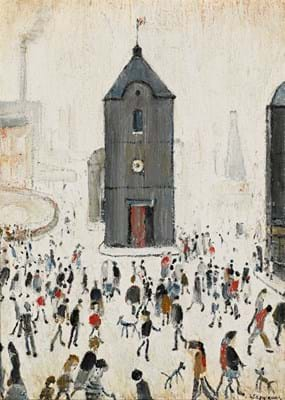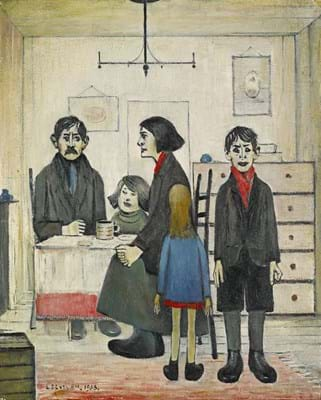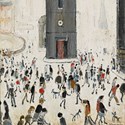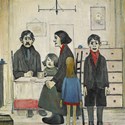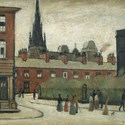The works which were owned by the singer who went on to become one Britain’s best-loved TV personalities had all been bought from the Crane Kalman Gallery in London. They formerly hung in her family home, having pride of place in the living room.
Following her death last August, the paintings appeared at Sotheby’s sale of Modern & Post-War British Art and were offered as separate lots with a combined estimate of £520,000-830,000.
Discussing the sale, Sotheby’s specialist Simon Hucker said: “For many it may come as a surprise that Cilla owned and cherished works by Lowry, but then why wouldn't she?
“Lowry painted the world that she grew up in: the tightly packed terraces and backstreets of the cities of the industrial North. His work records and celebrated the working-class culture that gave Cilla her identity and which she never wanted to lose despite becoming a national celebrity.”
Epstein’s Influence
Cilla Black was first introduced to buying art by Brian Epstein, the famous Beatles manager who signed her up as a singer in the mid-1960s, and later introduced her to a number of artists who were prominent at the time.
The three pictures at Sotheby’s were fairly typical paintings by the prolific Lowry and none were the kind of large-scale industrial scenes or views of well-known landscapes with densely populated matchstick figures that have been known to take bids of over £1m.
The top Lowry of the three works was Family Group, a 21 x 17in (54 x 43cm) oil on canvas from 1938. It had been bought by Cilla Black and her husband Bobby Willis from Crane Kalman in 1973. Offered here with a £300,000-500,000 estimate, it sold at £353,000 (including premium).
Drawing greater competition was The Black Church, a smaller 14 x 10in (36 x 26cm) oil on canvas that was bought by Willis in 1993 as a surprise for his wife 50th birthday – the picture having ‘Black’ in the title adding appeal with the pun on her stage name.
Executed in 1964 and estimated at £120,000-180,000, it sold at £245,000 (including premium).
The third work was The Spire, a 10¾ x 14½in (27.5 x 37cm) oil on panel dated 1949 which had been bought from Crane Kalman in December 1973. It sold under-estimate at a premium-inlcusive £100,000.


